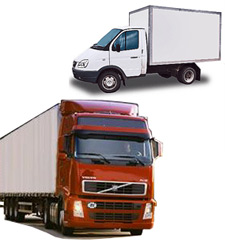A bicycle is a set of moving parts, and when dirt, dust and moisture hit them, the movement efficiency of these parts is significantly reduced. That is why it is extremely important to conduct regular inspections (monthly, weekly or even more often depending on the intensity of the ride). If you ride for a long time in wet and dirty weather, or simply prefer a fast and intense ride, you will have to clean the bike more often.
In fact, regular cleaning and lubrication of parts of the bicycle greatly affects the efficiency of the ride. The lubricant protects moving parts from friction caused by early wear and seizure, and also prevents the formation of rust.
However, you need to comply with the measure. Excessive lubrication only leads to a decrease in performance and damage to parts due to the fact that excess oil accumulates dust and abrasive particles. Make it a rule to wipe them before each trip.
Tip: While lubricating several different parts at the same time, remember the order in which you did it, and remove excess oil in the same sequence. In this way, you give the oil enough time to soak.
Devices for cleaning and lubrication
 For basic cleaning and lubrication of the bike, you will need the following:
For basic cleaning and lubrication of the bike, you will need the following:
Clean rags: There should be a lot of rags , and they are needed for both lubrication and general cleaning and wiping.
Brushes: For thorough cleaning of hard-to-reach places that are not amenable to normal washing, you must have brushes of different shapes and sizes. Great for old toothbrushes.
Water: With reasonable use, it is an effective tool, but you need to be extremely careful. The fact is that water, especially under pressure, can damage sensitive bearings.
Soap / detergent: Buy either liquid soap or a special product for washing bicycle frames.
Degreaser: Using a dedicated bicycle degreaser (but not kerosene or turpentine) will reliably clean the chain and other lubricated components. Choose the least aggressive solvent and dispose of it properly.
Chain lubricant: Regular and thorough lubrication of the chain can significantly extend the service life of the transmission, but for this it is necessary to acquire only special bicycle lubricant, which you need to apply to the previously cleaned chain.
There are two types of lubricants: liquid and dry. Liquid lubricant designed for use in high humidity or rain. It adheres strongly to the components of the transmission and is much slower washed off the chain. But these properties have disadvantages. So, dust and dirt will adhere to the chain just as firmly, so before you go, you must carefully remove the excess.
Dry grease is designed for application in dry weather. Dust and dirt stick to it much less, but even with a little rain, this lubricant is washed off much faster than liquid.
More details: how to clean and maintain a bicycle chain
Bike rack: Allows you to lock the bike at the desired height for easy cleaning and lubrication. In addition, it is convenient to pedal at the rack and remove wheels to clean moving and hard-to-reach components.
What and how to clean
The most polluted parts of a bicycle can be wiped with a dry or damp cloth. The rest require regular washing, cleaning with a brush and lubrication.
Be extremely careful when using water under pressure, as it can damage sensitive bearings.
Cleaning a bike consists of four main steps:
- Frame cleaning.
- Cleaning and lubrication of the chain.
- Lubrication of the brake and shift levers.
- Lubrication of nodes and cables braking systems and gearshifts.
In general, the transmission (front stars, rear cassette, rear gear selector and chain) requires the most attention.
Frame: Take a brush and a bucket of warm soapy water, and gently wipe off any dirt from the frame. To properly clean from top to bottom in the following order: steering wheel, steering column, upper tube, seatpost, upper rear triangle feathers, front fork and brakes. If you have a disc brake system, try to avoid contact with soap solution on the rotors and pads. By the way, for rotors there is a special alcohol cleaner. The last elements to clean are the lower feathers, stars, gears and connecting rods. Then take a bucket of clean water and rinse all the parts in the same order, then wipe with clean, dry rags.

 Chain: This component suffers the most from insufficient lubrication, therefore, to slow wear, the chain must be cleaned and lubricated regularly.
Chain: This component suffers the most from insufficient lubrication, therefore, to slow wear, the chain must be cleaned and lubricated regularly.
To clean a not very dirty chain, a dry cloth with a degreaser is quite sufficient, but if it is very dirty, you may need a special device that allows for a more thorough cleaning.
After drying out the degreaser without haste, apply a drop of grease to each chain link and allow it to soak in, and then to avoid subsequent sticking of dirt, remove excess cloth with a cloth.
In general, the lubrication procedure should be carried out with the appearance of squeaks or drying of the chain, as well as after being hit by rain to avoid rust.
 Brake Levers and Gear Levers: After cleaning, apply a few drops of lubricant to the hinges of the levers and the shifters to maintain their performance.
Brake Levers and Gear Levers: After cleaning, apply a few drops of lubricant to the hinges of the levers and the shifters to maintain their performance.
 Cables for braking and shifting: Check regularly (especially in high humidity conditions) and periodically apply lubricant to ensure effective operation of the switches.
Cables for braking and shifting: Check regularly (especially in high humidity conditions) and periodically apply lubricant to ensure effective operation of the switches.
 Brake assembly and gearshift assembly: These assemblies consist of a large number of small moving parts. Make sure that the levers and rollers do not clog up and do not lose mobility. Lubricate all pivot points, but beware of contact with the pads.
Brake assembly and gearshift assembly: These assemblies consist of a large number of small moving parts. Make sure that the levers and rollers do not clog up and do not lose mobility. Lubricate all pivot points, but beware of contact with the pads.









